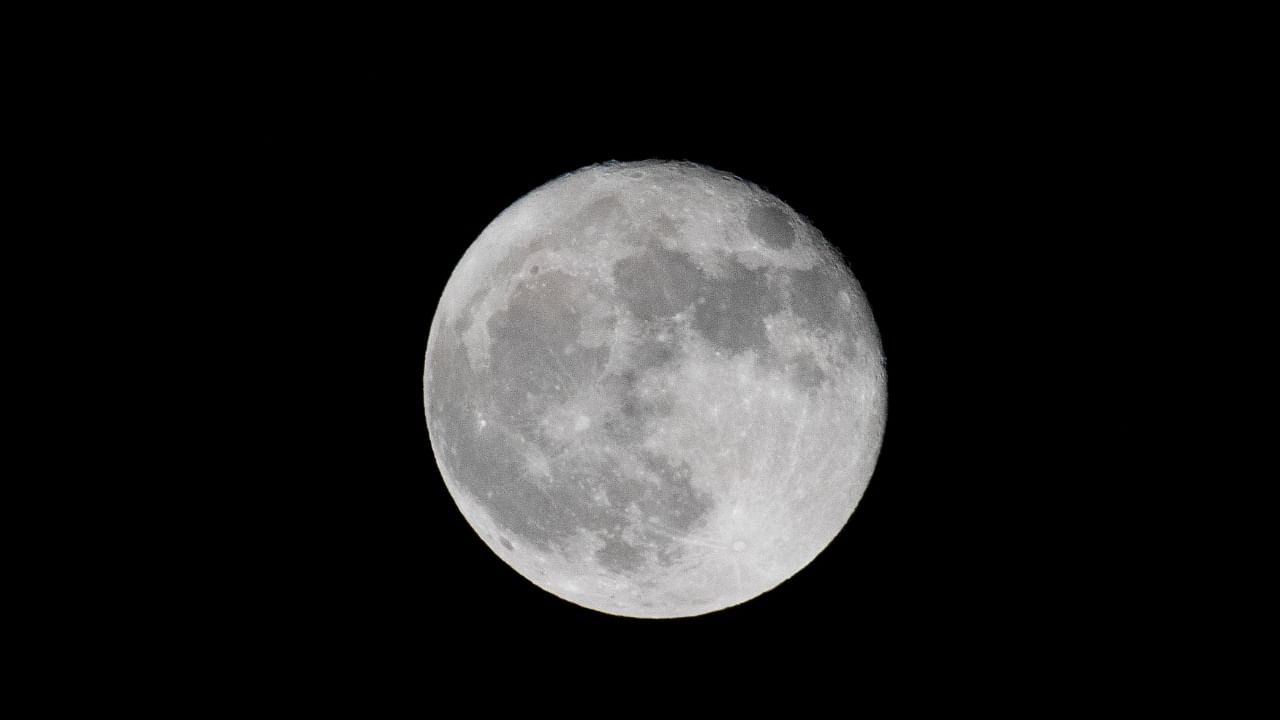
Representaitve image for moon.
Credit: Reuters Photo
On Tuesday, a capsule carrying soil from the far side of the moon will parachute into the desert in China’s Inner Mongolia region.
The sample, retrieved by the Chinese National Space Administration’s Chang’e-6 lander, is expected to be the latest accomplishment in a series of near-flawless executions of Chinese lunar exploration missions since 2007.
Here’s what you need to know about the Chang’e-6 mission’s return to Earth.
When is the landing, and how can I watch it?
China’s space agency has yet to confirm when the mission will conclude.
But according to NASA’s Goddard Space Flight Center, the Chang’e-6 sample return capsule is expected to land at 1:41 a.m. Eastern time, which is 1:41 p.m. local time in the Siziwang Banner area of Inner Mongolia, a region in northern China.
The New York Times will share an embedded live video stream if the Chinese space agency provides one closer to the expected landing time.
What is the far side of the moon?
Don’t call it the dark side of the moon, for starters — it gets plenty of sunlight.
But when you look up at the sky from Earth, you only ever see one side of the moon, the near side. Its face is blotched with wide, dark plains where ancient lava once flowed.
The far side of the moon — the half hidden to us on Earth — is different. It has fewer of those plains, more craters and a thicker crust, though scientists aren’t sure why.
It may not be a mystery much longer. China has landed two missions there aiming to study why it’s so different from the near side.
What is China’s Chang’e program?
Named after the Chinese moon goddess Chang’e (pronounced “chong-uh”), China’s lunar exploration program was originally designed with three stages: orbiting, landing and sampling. The first two spacecraft, Chang’e-1 and 2, circled the moon, snapping images of and mapping its surface. Chang’e-3 landed on the lunar near side in 2013, and in 2019, Chang’e-4 accomplished the same on the far side. Rovers from both missions then studied the lunar surface more closely.
One year later, Chang’e-5 touched down and gathered nearly 4 pounds of lunar regolith that were then launched to Earth. The mission made China the third country — after the United States and the Soviet Union — to retrieve a sample from the moon.
What has happened during Chang’e-6 so far?
Chang’e-6 launched May 3 with even grander plans: bringing back material from the far side of the moon. Because this half never faces Earth, it is impossible to directly communicate with landers on the lunar far side, making it difficult to reach successfully. The Chinese space agency used two satellites that orbit the moon, Queqiao and Queqiao-2, to remain in touch with Chang’e-6 during the mission.
The spacecraft spent a few weeks in lunar orbit, then landed on the moon in June. It descended to a site at the edge of the South Pole-Aitken basin, the oldest, deepest impact crater on the moon.
Equipped with a mechanical scoop and a drill, Chang’e-6 spent two days gathering lunar rock and dust from its surroundings and the moon’s subsurface. Those samples were then stashed away in the spacecraft. A small rover attached to the spacecraft’s side took a picture of the lander with a raised Chinese flag.
Then on June 3, a rocket on the spacecraft lifted off, sending the samples into orbit around the moon. The materials then reunited June 6 with a spacecraft that had remained in orbit and prepared to begin the journey back to Earth.
Sometime Tuesday, the sample container will attempt to reenter Earth’s atmosphere. If the mission is as successful as Chang’e-4, China will recover the materials, and the scientific research of their contents will begin.